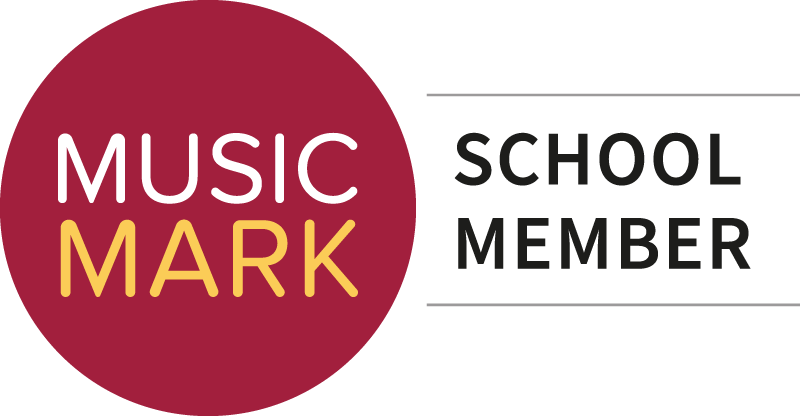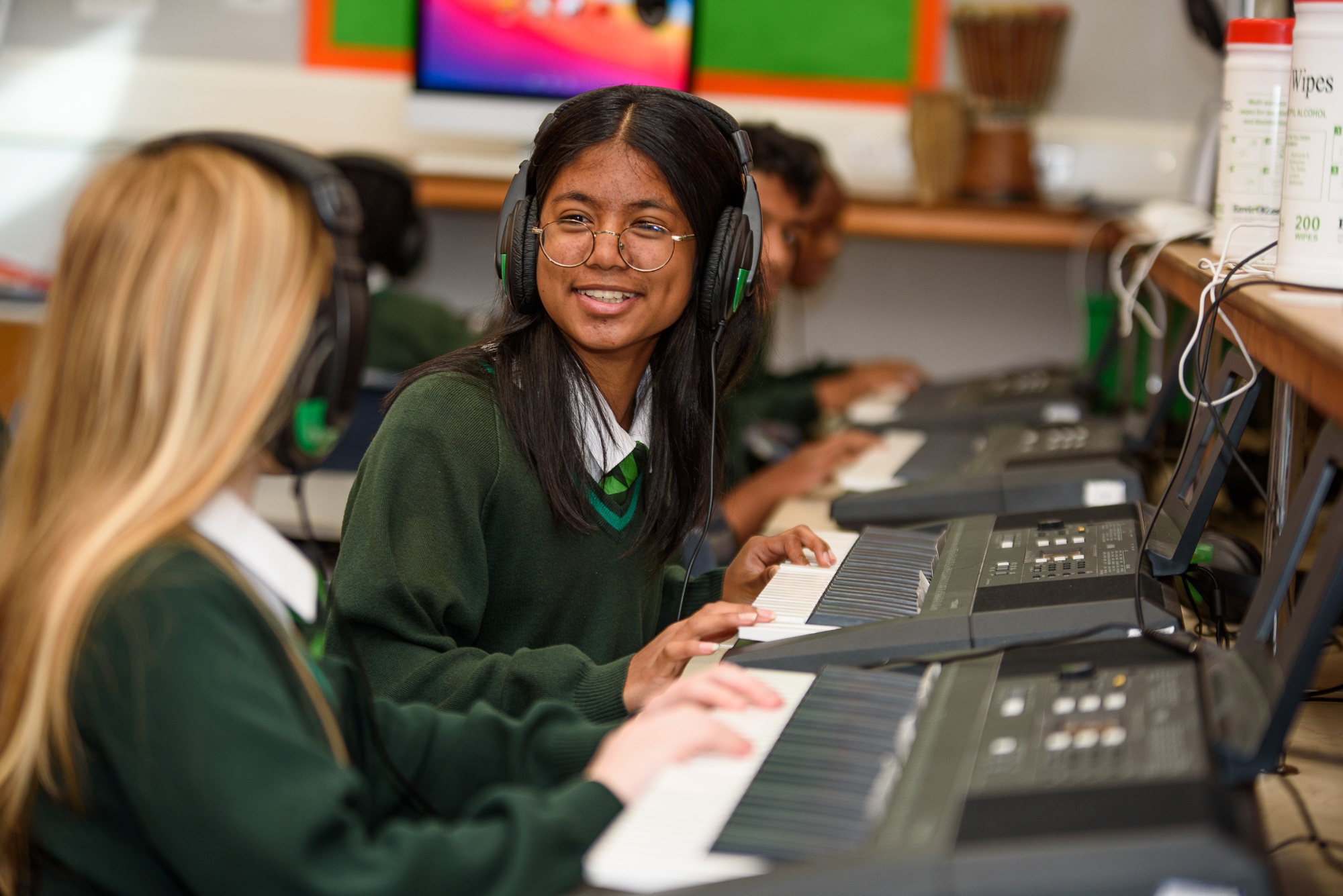Music
The music department at Greenshaw has three simple aims: to facilitate the learning of a variety of different musical styles from all over the world via meaningful engagement in practical music-making, to celebrate the diverse talents of all our students, and to make music fun.
Students have the opportunity to take part in many extra-curricular activities including choir, ukulele band, a small instrumental mix band and School of Rock. The music department collaborates with other creative arts departments on concerts and whole-school productions, in addition to creating other performance opportunities in and out of school.
 The department has recently been accredited with the Music Mark (The UK Association for Music Education that collaborates with ABRSM). Sutton Music Service nominated the department for membership in recognition of the work we do to ensure that our students are able to access and engage with a high-quality music education.
The department has recently been accredited with the Music Mark (The UK Association for Music Education that collaborates with ABRSM). Sutton Music Service nominated the department for membership in recognition of the work we do to ensure that our students are able to access and engage with a high-quality music education.Key Stage 3
What are the Big Ideas in music?
| Rhythm | Melody | Harmony |
|---|---|---|
|
Rhythm is the propulsive engine of the music, the pattern of long and short sounds as you move through a piece of music.
|
Melody is the story of the music built through a timely arranged linear sequence of pitched sounds that the listener perceives as a single entity. |
Harmony occurs when different but related notes are sounded at the same time, affecting the mood and tone of the music. |
How are these ideas developed?
| Year | Rhythm | Melody | Harmony |
|---|---|---|---|
| In Year 7 | The building blocks of rhythm are the basic musical values. | Basic melodies are constructed by a combination of short and long phrases. | Simple harmonic analysis is based on primary chords. |
| In Year 8 | Musicians use basic note duration to form simple rhythms. | Musical ideas are developed by using melodic and rhythmic variations. | The difference between major and minor chords defines the mood of the music. |
| In Year 9 | Rhythm interacts with pulse, forming discernible patterns. | Melodies are enriched using several melodic devices. | Chord progressions are used to form music cadences. |
What topics are used to explore these ideas?
| Autumn term | Spring term | Summer term | |
|---|---|---|---|
| In Year 7 | Rhythm and pitch | Musical theatre | Music technology |
| In Year 8 | Bass clef and keyboard skills | Hip Hop – protest rap | EDM composition |
| In Year 9 | Songwriting Band skills 1 |
Composing to a brief Band skills 2 |
Free compositionGCSE Music |
GCSE Music
GCSE
| Exam board | Eduqas |
|---|---|
| Paper | Understanding Music (40%) |
| Coursework 1 | Performance (30%) |
| Coursework 2 | Composition (30%) |
Teaching Schedule
| Autumn term | Spring term | Summer term | |
|---|---|---|---|
| In Year 10 | Elements of music History of music Area of study 1 – Musical forms and devices Set work: J S Bach – Badinerie |
Area of study 2 – Music for ensemble Area of study 3 – Film music Area of study 4 – Popuar music Set work: Toto – Africa |
Free compositin Revision |
| In Year 11 | Performance recording Brief composition |
Revision |
Greenshaw High School also offers peripatetic vocal and instrumental lessons with Sutton Music Service. Lessons are delivered in the music department during the school day on a rotating weekly timetable by specialist music tutors.
For further details, please download the following document from Sutton Music Service:
Greenshaw High School Peripatetic Music Lessons 2024-25Downloads to help with classwork, extended work or coursework, can be found on Frog.
Our school music development plan can be found at the bottom of the page.
Mr C Jones is our Teacher of Music.


